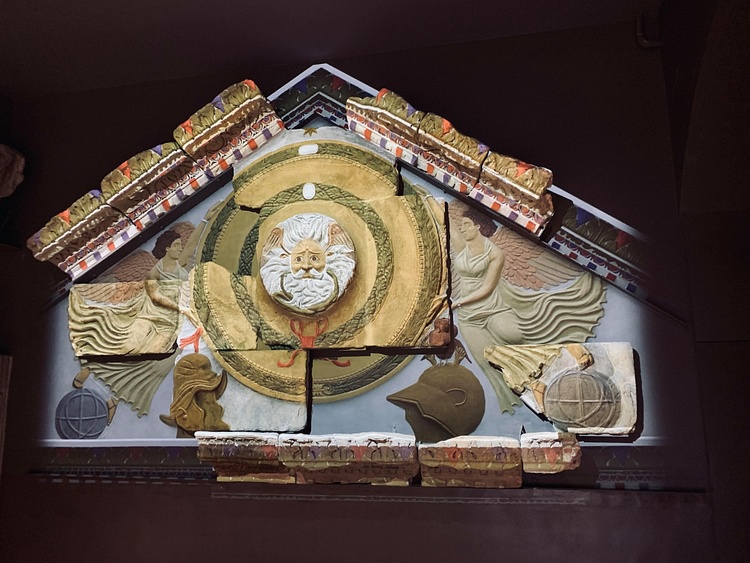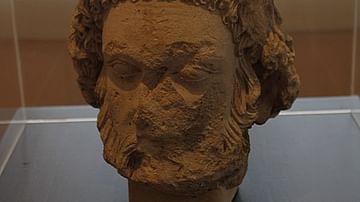Server Costs Fundraiser 2024
Illustration
The pediment from the temple of Sulis Minerva is a carving of a Gorgon’s head- thought to be a “male Medusa” surrounded by hair, wings and possibly snakes. Gorgon’s heads are linked to Minerva and her Greek equivalent, Athena, as she carries the gorgon symbol on her shield and/or armor. The Sulis Minerva temple was in use in the Roman period in Britain (1st to early 5th century CE) and can now be viewed in the Roman Baths Museum in Bath, UK.
About the Author
Cite This Work
APA Style
Marcussen, W. (2019, July 16). Roman Gorgon's Head - Bath. World History Encyclopedia. Retrieved from https://www.worldhistory.org/image/11012/roman-gorgons-head---bath/
Chicago Style
Marcussen, Wanda. "Roman Gorgon's Head - Bath." World History Encyclopedia. Last modified July 16, 2019. https://www.worldhistory.org/image/11012/roman-gorgons-head---bath/.
MLA Style
Marcussen, Wanda. "Roman Gorgon's Head - Bath." World History Encyclopedia. World History Encyclopedia, 16 Jul 2019. Web. 26 Jul 2024.








